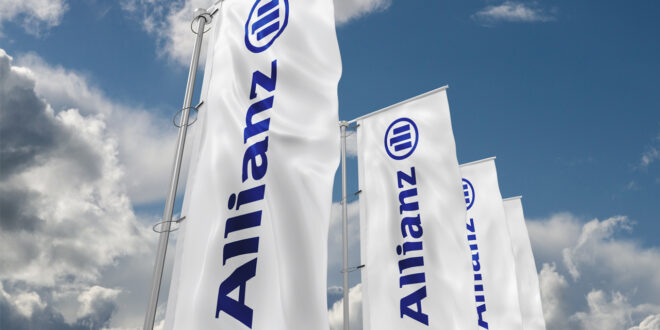Baltimore’s Francis Scott Key Bridge collapsed into the Patapsco River in the early hours of March 26 after a container ship, the Dali hit a column. Initial reports suggested that as many as 20 people from the bridge may be in the water. There were no reported crew casualties.
About the vessel:
The Dali is a 9-year-old, Singapore flagged container ship, which is approximately 300m long (almost 1,000 feet), about the length of three football pitches. Gross tonnage is 95,218, so under half of that of the Ever Given, the vessel that blocked the Suez Canal in 2021
About Baltimore port:
The Dali just left the Helen Delich Bentley Port of Baltimore, which is the largest port in the US for specialised cargo (specifically for wheeled cargo, such as trucks and trailers) and bulk handling facilities.
It is estimated that around 800,000 vehicles passed through the port in 2023, moving a record 1.3 million tons of imported cargo.
Shipping collision and contact incidents statistics from the Allianz Commercial Safety and Shipping Review (applies to vessels over 100 gross tonnage and reported incidents only)
- There have been close to 2,000 reported incidents of vessels colliding with port infrastructure such as harbor walls etc. over the past decade around the world (1,980 between 2013 and 2022), making it the fourth most frequent cause of more than 27,000 shipping incidents during this period (around 7%). Machinery damage/failure (10,753), collision involving vessels (3,098) and groundings (2,936) are the other top causes of incidents during this period.
- There have been 203 contact with infrastructure incidents involving container ships around the world during this period. The most common incidents involve colliding with port infrastructure such as harbor walls, piers, quays, locks. Bridge incidents such as this one are rare (no exact data on how many).
- The shipping industry has made significant improvements when it comes to maritime safety over the past decade in particular. Thirty years ago, the global fleet was losing 200+ vessels a year. At the end of 2022 fewer than 40 losses were reported. Annual shipping losses have declined by 65% over the past decade reflecting the positive effect of an increased focus on safety measures over time. Nevertheless, while total losses have declined the number of shipping incidents reported around the world every year has remained consistent. There were 3,032 reported incidents during 2022 compared to 3,000 a year earlier.
- Machinery damage/failure accounted for close to half of all of these incidents globally in 2022 (1,478). There were 280 collision incidents involving vessels (the second top cause), over 200 reported fire incidents (209) – the highest total for a decade, while contact with port infrastructure such as harbor walls was the fifth top cause of shipping incidents (155 incidents)
- Based on the causes of previous contact incidents, common causes of this type of incident can include human error and machinery/equipment/engine failure such as main engine failure, steering failure, generator blackout.
- Total losses of vessels following collision incidents with other vessels and contact with port infrastructure are thankfully rare. Over the past decade (across all vessel types) there have been just 30 total losses from collision incidents (with other vessels) and just four from contact incidents (with port infrastructure). Collectively these account for just 4% of the total number of vessels lost overall (807 reported between 2013 and end of 2022).
Possible insurance implications
Initial reports indicate the nature of the incident is likely to fall within the scope of P&I coverage which covers third party liability for vessels including damage to fixed or floating objects. Outside of the implications from any tragic loss of life, the nature of the incident points to a sizeable loss, given the extent of the damage to the bridge and the surrounding area and the fact it is in the US. Other potential losses could result from blocked port access, cargo loss, any environmental implications etc.,
Other relevant statistics
Events like these are rare, particularly in recent years. An academic paper shows in the period from 1960 to 2015, there were 35 major bridge collapses worldwide due to ship or barge collision with a total loss of life of 342 people. Eighteen (18) of the bridge catastrophes mentioned above occurred in the US. It should be noted that there are numerous vessel collision accidents with bridges which cause damage that varies from minor to significant but does not necessarily result in collapse of the structure or loss of life. During a 2-week period in January 2016, there were 6 separate barge collisions with highway and rail bridges crossing the Mississippi River due to floodwater conditions. None of the collisions were catastrophic, but the bridges had to be closed temporarily for structural inspections and repairs.
State of bridges/infrastructure in the US – According to the American Road & Transportation Builders Association (ARTBA), more than one-third, or 220,000, of the nation’s 618,000 bridges need structural repair, rehabilitation work, or replacement (2021).
General risks with large vessels
Large vessels continue to drive ever-higher exposures, with fires, container and carrier losses, hazardous cargo, costlier salvage operations and issues with port of refuge leading to oversized losses. For example, container-carrying capacity on ships has increased by almost 1,500% over the past 50 years agcs-shipping-safety-21-50-
While the number of serious shipping accidents worldwide has declined over the long-term, incidents involving large vessels – namely container ships and roll-on roll-off (ro-ro) car carriers – are resulting in disproportionately high losses. Recent events include fires on board the car carriers Fremantle Highway, Felicity Ace and container ship X-Press Pearl.
In 2022, the large container ship Ever Forward ran aground in Chesapeake Bay on the US Eastern Seaboard, and was stuck for over a month, almost a year to the day after its sister vessel the Ever Given ran aground and blocked the Suez Canal for six days in March 2021.
As vessels have grown larger, values at risk have increased, while the environmental bar has been raised. However, regulation, safety management systems and salvage capabilities appear to have not always kept pace.
A number of incidents involving large losses in recent years have also ended in costly salvage and wreck removal operations, such as that of the car carrier Golden Ray which capsized just outside the US port of Brunswick in 2019, took almost two years and cost in excess of $800mn. The operation, the largest ever of its kind in the US, involved three-million-man hours and specialist equipment to cut the ship into eight pieces for removal.
The rising cost of salvage and wreck removal for large vessels is a particularly worrying trend for the insurance industry. The complexity is compounded by environmental concerns, which continue to drive up the average cost of such incidents. Wreck removal for a large vessel can now easily run into the hundreds of millions of dollars, and in some cases upwards of $500mn.
 ..:: AUTO REPORT AFRICA ::..
..:: AUTO REPORT AFRICA ::..




